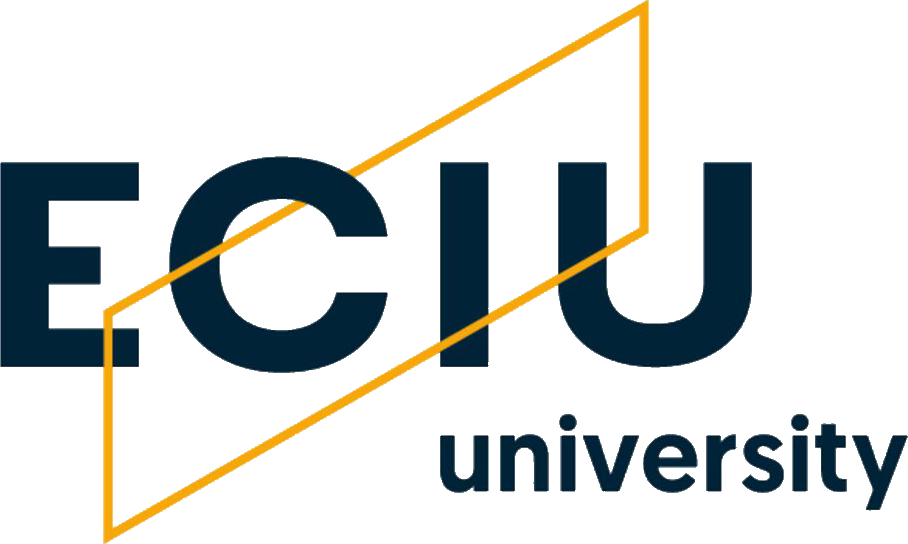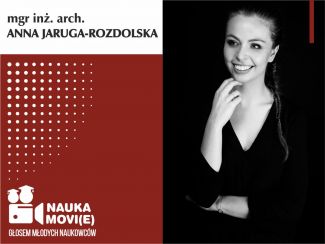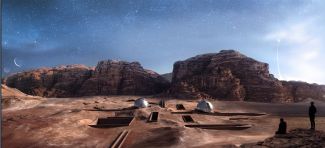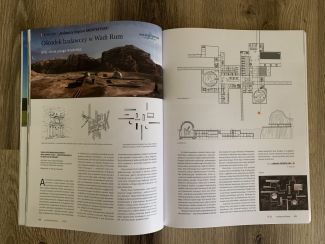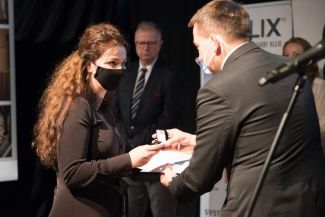A graduate of Lodz University of Technology, awarded a prize in the best diploma project competition organized by the Association of Polish Architects, for an interesting juxtaposition of astronomy and architecture. Anna Jaruga-Rozdolska says: These sciences are inseparably linked with each other. Ancient civilizations left structures - artifacts which were used to observe the night sky, thus indicating very early connections between these two fields. Mgr inż. Anna Jaruga-Rozdolska, the next speaker in the series popularizing the achievements of young TUL researchers, talks about the challenges in design work and the value of science in architecture.
Vitruvius said that architecture is about three principles: durability, utility and beauty. What does architecture mean to you?
I understand the role of architects in the society in two ways. On the one hand - as a responsibility in the process of creating a comfortable, functional and beautiful environment for humans, on the other - as the role of an educator who, through a project such as a building, draws attention to a problem: be they environmental, social, related to the conservation of historical buildings, etc.
You often emphasize that sustainability is a very important aspect of an architects' job. What challenges do you see in this field?
While speaking about the responsibility that comes with the profession of an architect, and being aware of the negative phenomena occurring in the environment, I believe that every designer’s responsibility is to come up with best possible solutions for the environment. Increasing investors' awareness of the possibility of using renewable energy sources, proposing solutions and materials that translate into durability and energy efficiency of the building, emphasizing the role of green areas and the impact of buildings on the environment - these and many other aspects should be a constant element of design work. A noteworthy initiative is Architects for Climate - a platform for exchanging knowledge, presenting good practices on the domestic market, as well as providing access to a series of lectures and conferences.
The research center in Wadi Rum in Jordan which you designed was recognized in the prestigious Z. Zawistowski competition for the Diploma of the Year. It was appreciated for "exceptional interdisciplinary study, combining knowledge from two fields - astronomy and architecture, as well as the final result in the form of a functional technological facility with a mature and beautiful architectural form. What do these two fields have in common?
Astronomy, next to architecture, is my great passion which I share with my husband - a professional pilot. We are both members of the Polish Society of Astronomy Lovers which, by the way, we invite anyone interested to join. Astronomy and architecture are inextricably linked sciences. Ancient civilizations created buildings - artifacts used to observe the night sky, indicating very early connections between the two fields - from the megaliths at Stonehenge to observatories in the Middle East dating back to the early Middle Ages. Today, thanks to modern technology and materials, the capacity of telescopes is increasing, and the architecture that serves astronomy is also evolving. Understanding the impact of such a large-scale object in the landscape, I wanted to draw attention to both the problem of designing such objects with due respect for the existing context and to propose solutions for reducing the negative impact of the building on the environment. This is possible, among others, thanks to the use of renewable energy sources in the project.
On the one hand, you are an architect developing professionally, on the other - you are writing a research paper. Can you please describe the workshop of a research architect?
A good architect is both a scholar and a practitioner. Research work, participation in conferences, broadening the knowledge of the theory of architecture have given me a completely different, deeper understanding of the design process. On the other hand, practice is an important point of reference. With the educational aspect as one of the goals of my dissertation, I always think how the subsequent chapters may be interpreted by architects, how they may broaden their knowledge and thus positively influence the quality of the architecture they design. The experience gained in architectural offices helps to understand these relationships. Referring back to my personal memories, I remember the beginnings of my career and the excitement of knowing that a computer file becomes a real, tangible object. As a result, I found practice to be the most important aspect. I ignored the role of theory, at the expense of grades during my first cycle of studies, unfortunately. I only got good marks in design subjects, considering the rest as a necessary evil. The turning point was the moment when standing in front of Professor Jan Salm's office, I was checking my history of architecture exam grade. I got a 3 and was genuinely happy to have passed and not to have to miss another day at the office. Professor Salm, seeing me so pleased, asked if that grade satisfied me, and when he heard an affirmative answer and my explanation that I valued practice the most, he said something that completely changed my perception: "It is a pity, Miss. In my opinion an architect should be more than just an engineer". Understanding the meaning of this statement translated into successes both in my professional work and my studies confirmed by a high grade point average in my second cycle studies and my decision to continue education in the doctoral school. I believe that the distinction I received in the "Diploma Thesis of the Year" competition is also a result of that. Thank you, Professor!
You know several foreign languages: English, German, Spanish, French, Russian, and therefore also to some extent the culture of the countries in which they are spoken. Is this a source of your inspiration?
I feel obliged to correct that I speak Spanish and French only to the extent necessary for communication. English and German, on the other hand, are an indispensable tool for a scientist to understand content and publish research results in foreign scientific journals. Russian is a language that I heard in my family home - my grandmother often sings Russian songs to me, so it was associated with the best, carefree years of my childhood, and learning it was just a pleasure. I am a part of a multicultural family - at our family table we meet Poles, Ukrainians, Germans, Russians, Kurds, Syrians, Georgians, people from France, Bulgaria, Iraq, Iran and those living for many generations in the United States or Australia. It is definitely a source of constant inspiration for me, an opportunity to look at many problems multidimensionally, to get to know the culture, language and cuisine, and many more opportunities to celebrate together.
Why is it important to be a scientist?
I see it as an opportunity to continually grow and expand my knowledge. Satisfying our curiosity, discovering new areas of thinking, new solutions, we act for our own benefit and that of the whole. The implementation of research results in the development of a particular field or, in the case of interdisciplinary studies, of many fields. The satisfaction resulting from this is enormous, and the fact that we can positively influence our surroundings thanks to our work is comparable to the joy of completing an architectural project.
